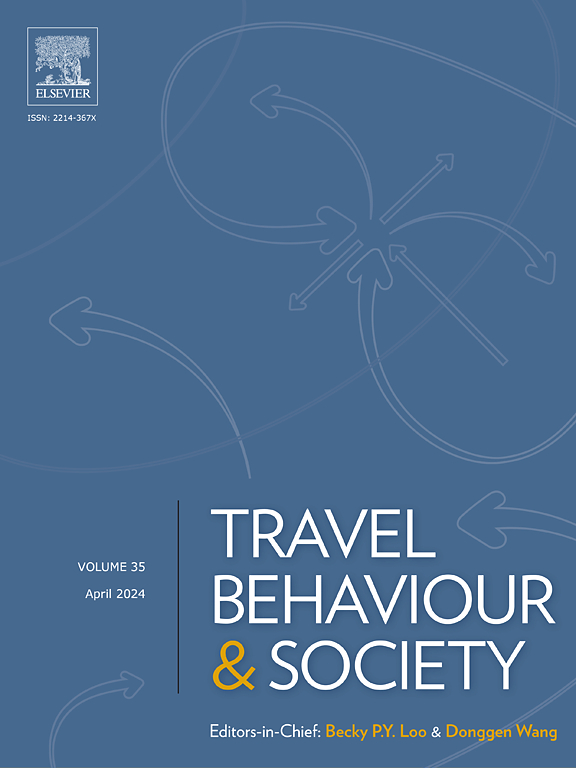北京公交与地铁通勤空间结构格局:互补还是竞争?
IF 5.1
2区 工程技术
Q1 TRANSPORTATION
引用次数: 0
摘要
许多城市的公共交通已经变得越来越多式联运。如何更好地整合各种过境服务和路线,以适应日常出行需求,需要特别关注。然而,很少有研究调查过境旅行的空间结构以及这些结构如何在过境模式之间不同或重合。本研究以中国北京市为例,对公交和地铁通勤的空间集聚模式进行了一套地理空间分析。本文还采用一种改进的空间相似指数来考察两种交通方式之间的空间关系。群落检测结果表明,短、中行程(0-20和20-40 min)比长行程(40-60 min及以上)更容易识别空间集群。此外,还确定了公共汽车和地铁服务之间潜在的竞争和互补关系,特别是在一些就业和住房供应更为平衡的成熟地区及其周围。对于长时间通勤(40-60分钟),在一些市中心地区,公交出行和地铁出行之间的空间相似性更大,这表明住宅和工作场所之间存在潜在的不匹配。由此得出的结论是,如何协调公共汽车和地铁服务,以更好地适应不同长度的通勤需求。本文章由计算机程序翻译,如有差异,请以英文原文为准。
The spatial structural patterns of commuting trips by bus and metro in Beijing, China: Complementary or competing?
Public transport in many cities has become increasingly multimodal. How to better integrate various transit services and routes in accommodating daily travel needs requires particular attention. However, few studies have investigated the spatial structures of transit trips and how such structures may differ or coincide between transit modes. Drawing on Beijing, China, as a case study, this research performs a suite of geo-spatial analyses to investigate the spatial clustering patterns of commuting trips via bus and metro. A refined spatial similarity index is also employed to examine the spatial relationships between commuting trips via the two transit modes. Through community detection, the results indicate that the spatial clusters are more identifiable for short and medium durations (0–20 and 20–40 min) than for longer trips (40–60 min and above). In addition, potential competing and complementary relationships between bus and metro services are identified, especially in and around some established locales with a more balanced provision of employment and housing. For prolonged commutes (40–60 min), greater spatial similarity between bus trips and metro trips is found for some inner-city areas, suggesting a potential mismatch between residences and working places. Implications are derived to inform the coordination of bus and metro services to better accommodate commuting demands of varying lengths.
求助全文
通过发布文献求助,成功后即可免费获取论文全文。
去求助
来源期刊

Travel Behaviour and Society
TRANSPORTATION-
CiteScore
9.80
自引率
7.70%
发文量
109
期刊介绍:
Travel Behaviour and Society is an interdisciplinary journal publishing high-quality original papers which report leading edge research in theories, methodologies and applications concerning transportation issues and challenges which involve the social and spatial dimensions. In particular, it provides a discussion forum for major research in travel behaviour, transportation infrastructure, transportation and environmental issues, mobility and social sustainability, transportation geographic information systems (TGIS), transportation and quality of life, transportation data collection and analysis, etc.
 求助内容:
求助内容: 应助结果提醒方式:
应助结果提醒方式:


